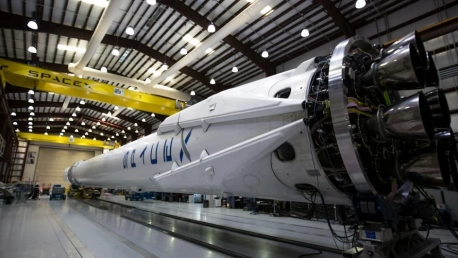SpaceX’s Starlink has made significant strides in the low Earth orbit satellite market, recently achieving a milestone with over 100 satellites equipped with direct-to-cell capabilities to enhance mobile connectivity using regular smartphones. The direct-to-cell satellite service, aimed at providing ubiquitous mobile connectivity, is a critical advancement in the satellite communication sector.
SpaceX and T-Mobile: A Strategic Partnership
This major achievement is underscored by the collaboration between SpaceX’s Starlink and T-Mobile US. Together, they seek to pioneer satellite-based mobile services to improve coverage, especially in underserved areas where traditional cellular networks are insufficient. As highlighted by Sara Spangelo, Senior Director, Satellite Engineering, co-lead Direct to Cell at SpaceX, the primary goal remains to offer widespread connectivity. With more than 100 satellites already in orbit and additional launches planned, the partnership is on track to begin service delivery in the coming weeks or months.
Expanding Capabilities and Global Reach
Initially, the service will focus on text messaging, with aspirations to extend into voice and data services by 2025. T-Mobile US will serve as the reference partner for this groundbreaking service. Starlink’s ambitions don’t stop at the United States; plans are underway to expand globally. Existing partnerships with telecom operators in Canada, Australia, New Zealand, Japan, Switzerland, Chile, and Peru illustrate a global approach to enhancing mobile connectivity through satellite technology.
Competitive Landscape in the LEO Satellite Market
The article details the escalating competition within the LEO satellite market, especially in the direct-to-cell service segment. For instance, companies like Globe in the Philippines have allied with Lynk to pilot similar services. Amazon’s Project Kuiper, even though not currently focusing on direct-to-cell services, is accelerating its own satellite deployment plans, aiming to launch over 3,000 satellites in the coming years.
Urgency and Market Dynamics
The increasing urgency and fast-paced advancements in the industry are further highlighted by the moves of other telecom giants such as Verizon, partnering with AST SpaceMobile, and AT&T, which is also exploring direct-to-cell satellite services. These efforts underscore a collective shift towards leveraging satellite technology to revolutionize mobile connectivity.
Bridging the Connectivity Gap
One of the pivotal insights from the article is the transformative potential of direct-to-cell satellite services in bridging connectivity gaps using regular mobile devices, thus eliminating the need for specialized satellite phones. This innovative approach positions operators like T-Mobile and their allies at the forefront of a significant shift in global mobile communication.
Conclusion: A New Frontier in Connectivity
SpaceX’s Starlink has made remarkable progress in the low Earth orbit satellite industry, recently achieving a significant milestone with over 100 satellites outfitted with direct-to-cell capabilities. These capabilities are designed to enhance mobile connectivity, allowing regular smartphones to communicate seamlessly with the satellite network. This direct-to-cell satellite service is not just a technical upgrade but represents a substantial advancement in the realm of satellite communications. It aims to provide ubiquitous mobile connectivity, especially in remote and underserved areas where traditional cellular networks struggle to reach. This innovation is poised to revolutionize the way people stay connected, ensuring that gaps in mobile coverage are minimized and that even the most inaccessible locations can achieve reliable communication. Furthermore, the deployment of these advanced satellites is a testament to SpaceX’s commitment to pushing the boundaries of what is possible in satellite technology. The success of this initiative underscores the company’s pivotal role in shaping the future of global communications, making it a critical development in the satellite communication sector.









